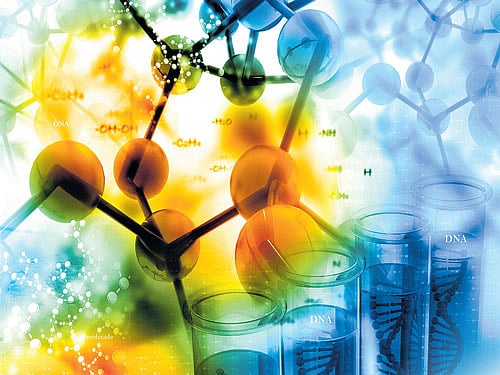
When a scrap of food gets stuck in your throat, you cough it out at once. When bacteria enters your body, your immune system fights tooth and nail to drive it out.
In some people, the rhythmic ‘lub-dub’ of the heart is not produced by muscles, but by a battery-powered, artificial pacemaker that sits right inside the heart. So, why doesn’t the body throw it out too?
We admire the marvellous engineering and programmability of a pacemaker, but one aspect that escapes our attention is — how does the body deal with a foreign object at its very core? When our body recognises something as foreign, it strives to get rid of it through an immunological response. A high temperature, i.e., fever, is an indication that your body is fighting infection.
Hence, to deal with various problems our body faces everyday, scientists have been designing special ‘biomaterials’ that do not produce adverse reactions when interacting with a living tissue. Just look at the inventions in this field: pacemakers, hip replacements, contact lenses, dental implants, breast implants and tissue grafts. Biomaterials can now be found in almost all parts of the human body.
Exciting experiments
Working along the same lines, Namrata Gundiah and her team at the Department of Mechanical Engineering, Indian Institute of Science (IISc), Bengaluru has developed a material with two very desirable properties, usually found in different materials.
They are — electrical conductivity, commonly found in metals, and flexibility, commonly found in plastic. The new material is a type of ‘polymer’, which means it contains repeating units of the same molecule, like the common polythene.
“We managed to make a polymer which is not only mechanically compliant, but also electrically the best,” says Suchi Agrawal, a researcher in Namrata’s group. The material’s electrical conductivity shot up seven-fold and its flexibility increased by six times compared to earlier used polymers.
In a country like India with a growing demand for medical implants, the cost and lifetime of an implanted biomaterial are crucial aspects. At the Materials Research Centre, IISc, Kaushik Chaterjee and Satyam Suwas have been modifying the surface of stainless steel used in orthopaedic implants to make them consumer friendly.
Nanocrystallisation is the modification of the surface of the implant materials at the nanometre scale, to improve performance and reduce corrosion and damage. The nanocrystallised implants also promoted bone cell attachment and growth, which will probably make the implants integrate better with the body.
Usually, these processes require skilled manpower and expensive equipment, limiting widespread application. The IISc researchers, however, have achieved nanocrystallisation in an energy- and cost-efficient manner by bombarding the implant surface with tiny, hard balls. This is no mean feat. The nano scale is a world of its own, with materials assuming different properties because of the minuteness of the operation. Making modifications at such a scale is an achievement indeed.
Medication made easy
Bikramjit Basu and Giridhar Madras from IISc have devised an implant that can deliver anti-inflammatory drugs to the desired area. Say you have an inflammation. You don’t have to pop a pill or apply ointment — a patch of biomaterial can be implanted on the inflammation, which can release drugs only to those places where they are needed.
While other commonly used polymers degrade into toxic compounds, which can potentially harm the user, the new implant is much safer to use. It can also release drugs at a slow rate over a prolonged period of time.
The same factors that make a biomaterial so ideal for use inside the body, that it does not react adversely with living tissue, also makes it an ideal surface for bacteria to grow on. When bacteria grow on implants, they form a film. They also grow very fast, preventing human cells from attaching to the implant surface. This prevents the body’s defence systems from acting on the bacteria and destroying them. The researchers in Bikramjit’s team came up with a novel method to prevent the formation of the film: using an external electric field that passes current through a carbon film, inhibiting bacterial growth.
The group tested this method on the growth of bacteria as well as human cells. A high electric field of 10 V/cm could kill 80 per cent of the bacteria in a short time. But this also inhibited the growth of human cells. A lower electric field of 2.5 V/cm destroyed the bacteria after a longer time, but it did not affect the human cells in any way. Bikramjit Basu explains, “As long as the surface on which bacterial cells are growing can conduct electricity, we can go ahead and use this technique”.
These promising results from state-of-the-art laboratories at IISc reveal exciting times for research in biomaterials, as well as interesting advancements in existing biomedical techniques.
